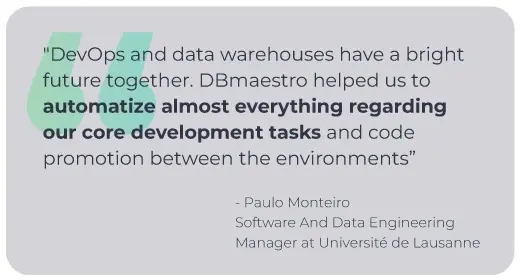Today, agile methodologies are the common method of practice for companies of all sizes. However, database development often lags behind, creating bottlenecks in the overall development process. By adopting agile database development best practices, teams can significantly improve efficiency, collaboration, and performance. This comprehensive guide explores ten essential practices that every agile team should implement in 2024 and beyond.
Understanding Agile Database Development
Agile database development applies the core principles of agile methodologies to database design and management. It emphasizes iterative development, continuous integration, and frequent feedback. This approach allows teams to respond quickly to changing requirements and deliver value faster.
Best Practice #1: Version Control for Databases
Implementing version control for databases is crucial for tracking changes, improving collaboration, and maintaining accountability. By treating database schema and code changes like application code, teams can:
- Track who made what changes and when
- Roll back to previous versions if needed
- Facilitate code reviews for database changes
- Ensure consistency across different environments
Version control tools specifically designed for databases can help teams manage schema changes, stored procedures, and other database objects effectively.
Best Practice #2: Automating Database Testing
Automated testing is essential for maintaining database integrity and reliability in an agile environment. By implementing automated tests, teams can:
- Catch errors early in the development cycle
- Ensure data consistency and integrity
- Reduce the risk of deploying faulty changes to production
- Save time on manual testing efforts
Automated tests should cover various aspects, including schema validation, data integrity checks, and performance benchmarks.

Best Practice #3: Continuous Integration (CI) for Databases
Integrating databases into the CI pipeline helps teams detect issues early and maintain consistency across environments. CI for databases involves:
- Automatically building and testing database changes
- Deploying changes to test environments
- Validating schema and data integrity
- Ensuring compatibility with application code changes
By incorporating databases into CI workflows, teams can reduce integration issues and accelerate the development process.
Best Practice #4: Database Refactoring Techniques
Database refactoring is the process of making incremental improvements to database design without changing its external behavior. Effective refactoring techniques include:
- Splitting tables to improve normalization
- Renaming columns or tables for clarity
- Adding or modifying indexes for performance
- Implementing views to abstract complex queries
Teams should approach refactoring cautiously, ensuring backward compatibility and thoroughly testing changes before deployment.
Best Practice #5: Embracing Agile Data Modeling
Traditional data modeling techniques often conflict with agile principles. Agile data modeling involves:
- Creating lightweight, flexible models
- Iterating on models throughout the development process
- Focusing on essential elements rather than exhaustive details
- Collaborating closely with stakeholders to refine models
By adopting agile data modeling practices, teams can create more adaptable database designs that evolve with changing requirements.
Best Practice #6: Using Database Change Management Tools
Database change management tools are essential for safely managing schema changes and data migrations in agile environments. These tools help teams:
- Automate the deployment of database changes
- Maintain version history of schema modifications
- Generate rollback scripts for failed deployments
- Synchronize changes across multiple environments
DBmaestro’s database automation solutions can significantly streamline the database change management process, helping teams implement agile practices more effectively.

Best Practice #7: Collaborating Closely with Development Teams
Close collaboration between database administrators (DBAs) and development teams is crucial for agile database development. This collaboration involves:
- Including DBAs in sprint planning and daily stand-ups
- Sharing knowledge about database design and performance optimization
- Jointly reviewing database changes and their impact on the application
- Aligning database development with overall project goals
By breaking down silos between DBAs and developers, teams can reduce bottlenecks and improve the overall development process.
Best Practice #8: Establishing Clear Database Governance
Clear database governance ensures security, compliance, and data integrity in agile environments. Key aspects include:
- Implementing role-based access control (RBAC)
- Defining and enforcing data quality standards
- Establishing processes for data privacy and compliance
- Regular auditing of database access and changes
Effective governance balances the need for agility with the importance of maintaining data security and integrity.
Best Practice #9: Performance Optimization in Agile
Continuous performance optimization is essential in agile database development. Teams should:
- Integrate performance testing into each sprint
- Monitor query performance and optimize as needed
- Use tools to identify and address performance bottlenecks
- Consider scalability when designing database schemas
By prioritizing performance throughout the development process, teams can avoid last-minute optimization efforts and ensure a smooth user experience.
Best Practice #10: Regularly Review and Iterate on Database Practices
Continuous improvement is a core principle of agile methodologies. Teams should:
- Conduct regular retrospectives focused on database development
- Analyze pain points and bottlenecks in the database development process
- Experiment with new tools and techniques
- Encourage team members to share knowledge and best practices
By consistently reviewing and refining their approach, teams can continuously improve their agile database development practices.
How DBmaestro Enables Agile Database Development
DBmaestro’s database automation platform is designed to support agile database development practices effectively. By leveraging DBmaestro, teams can overcome common challenges associated with integrating database changes into agile workflows. Here’s how DBmaestro facilitates these best practices:
- Version Control for Databases: DBmaestro provides robust version control capabilities, allowing teams to track changes and maintain a complete history of database modifications.
- Automated Testing: The platform integrates seamlessly with CI/CD pipelines, enabling automated testing of database changes alongside application code to ensure quality.
- Continuous Integration: DBmaestro supports continuous integration practices, ensuring that database changes are consistently integrated and validated throughout the development process.
- Database Change Management: With powerful change management tools, DBmaestro automates the creation of deployment scripts and ensures safe, repeatable deployments.
- Enhanced Collaboration: The platform fosters collaboration between DBAs and developers by providing a centralized space for managing database changes, reducing bottlenecks.
- Database Governance: DBmaestro includes built-in governance features to help maintain security, compliance, and data integrity throughout the development lifecycle.
By utilizing DBmaestro’s comprehensive automation and management capabilities, organizations can successfully implement agile methodologies in their database development processes, leading to faster delivery and improved software quality.
Key Takeaways
Implementing these agile database development best practices can significantly enhance a team’s ability to deliver high-quality database solutions quickly and efficiently. By embracing version control, automation, collaboration, and continuous improvement, teams can overcome traditional database development challenges and align more closely with agile principles.
Remember, the journey to agile database development is ongoing. Start by implementing these practices gradually, and continuously refine your approach based on your team’s specific needs and experiences.
To learn more about implementing agile methodologies in database development, check out this guide on agile database development. For teams working with cloud databases, explore these top cloud databases to support your agile development efforts.
Ready to take your agile database development to the next level? Schedule a demo with our experts to see how DBmaestro can streamline your database development process.





